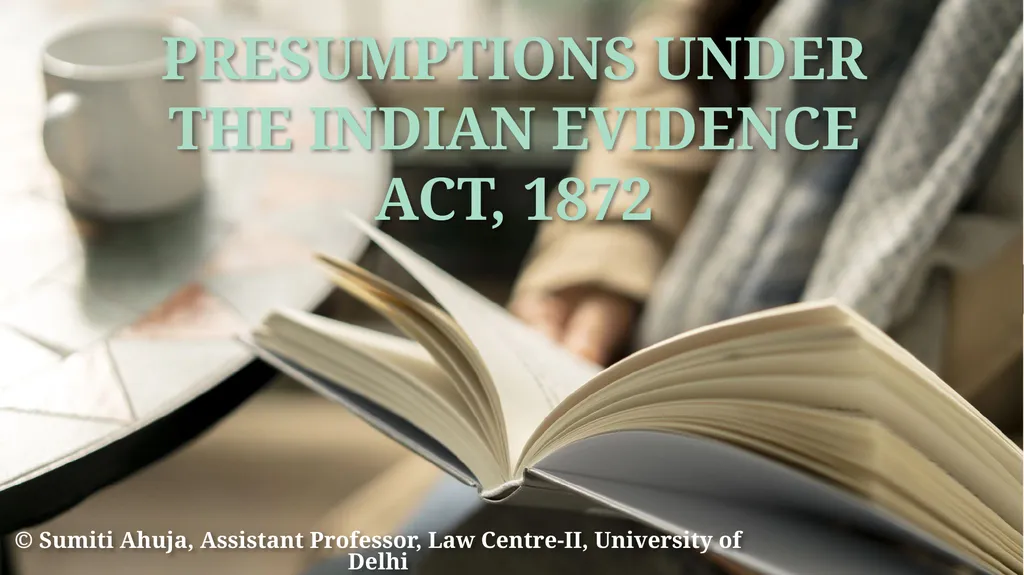
PRESUMPTIONS UNDER THE INDIAN EVIDENCE ACT, 1872 ©
Author: test | Published: 2025-08-06
Description: PRESUMPTIONS UNDER THE INDIAN EVIDENCE ACT, 1872 Sumiti Ahuja, Assistant Professor, Law Centre-II, University of Delhi CONTENTS Sections 4, 41, 105, 111-A, 112, 113, 113-A, 113-B, 114 and 114-A of the Indian Evidence Act, 1872 (IEA).
Download Presentation
Download the PPT/PDF: Download
Transcript:
Loading transcript�